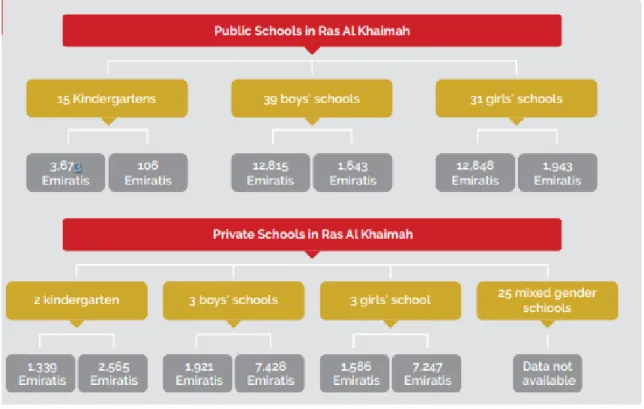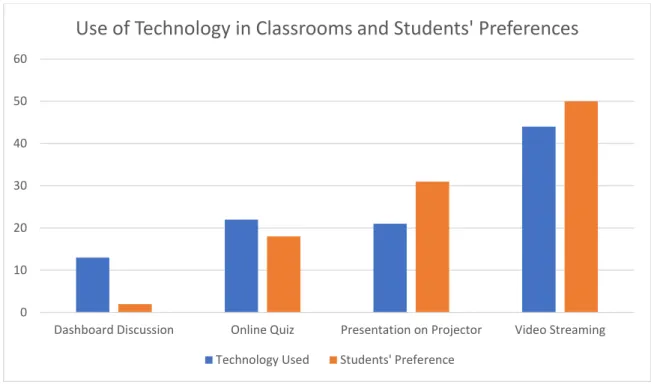The author, whose copyright is indicated on the title page of the work, has granted the British University in Dubai the right to lend his research work to users of its library and to make partial or single copies for educational and research use. The author has also granted permission to the University to retain or make a digital copy for similar use and for the purposes of digital preservation of the work.
B ACKGROUND
In addition, e-learning technology has also made education more accessible to students with different learning styles and abilities. Finally, e-learning technologies have revolutionized the way classroom teaching is done, making it more accessible, engaging, and learner-centered.
E DUCATION T ECHNIQUES IN UAE
The pandemic started in 2019 and has played an effective role in the adoption of technology-based education in the UAE region. The adoption of technology-based education in the UAE region has increased dramatically due to the pandemic, and it has become clear that advanced tools and instruments are essential to effectively educate students.
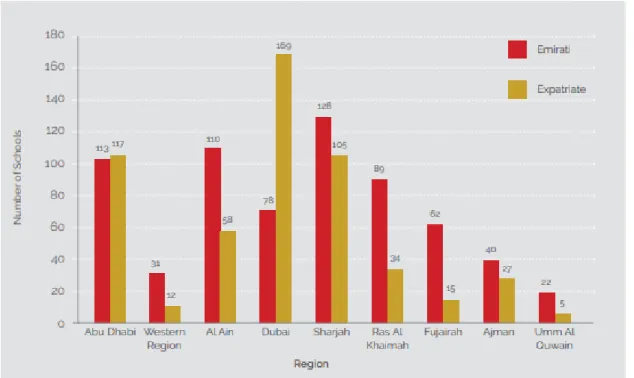
R ESEARCH Q UESTIONS
The pandemic has highlighted the importance of developing innovative teaching approaches that can support students to grow and learn internally. Educational institutions must continue to develop innovative teaching approaches that can support student learning, and advanced tools and instruments must be integrated into the educational system to ensure that students can compete effectively in the professional world.
A IMS AND O BJECTIVES OF R ESEARCH ;
It has allowed students to continue their education from anywhere, even in areas that may have limited resources or face other challenges. Additionally, the COVID-19 pandemic has had a significant impact on the education sector and has accelerated the adoption of e-learning and other digital technologies.
S TRUCTURE OF R EPORT
The literature review also helps to determine the importance of the research topic and the study's potential impact on the field. Overall, the literature review is a crucial part of the research process, which gives the researcher the opportunity to build on the existing knowledge in the field and contribute to advancing the field.
I MPORTANCE OF T ECHNOLOGY IN E DUCATION
The use of technology has also made education more inclusive, eliminating traditional barriers to learning. According to the study conducted, learning that is based on the use of technology is an effective method that can promote and support professional development.
T HE R OLE OF E DUCATORS & E DIFICATION I NSTITUTIONS
Teachers have great resources available on the Internet through which they can find material to guide students effectively and to develop an understanding of the theories along with their practical implementation in the authentic world (Kukulska-Hulme, 2011). Although the implementation of rapid transmutation in the building techniques is not possible, the regime and. Furthermore, the regime must provide sufficient budget to the scholastic institutions to implement the technology-based system in the schools and colleges (Richardson, 2017).
T HEORETICAL F RAMEWORK THROUGH G AGNE ’ S M ODEL
This is also true for military colleges, which require a technology-based facility to provide a better learning environment for students. These digital technologies enable students to access any book or resource anytime, anywhere. For this purpose, it is required to introduce an initial mode of education, in which students can get the digital learning environment.
G AINING A TTENTION
Incorporating digital technologies into the classroom can help capture students' attention and promote active learning, which can lead to improved academic performance. Therefore, teachers must adapt their teaching methods to incorporate digital technologies to capture students' attention and involve them in the learning process. Therefore, it is essential that teachers use digital technologies in their teaching methods to make learning more interesting and engaging for students.
I NFORMING THE LEARNER OF THE OBJECTIVE
The authors further argue that digital technologies have become an integral part of students' lives and can be used to their advantage in the learning process. Another important aspect of effective teaching is the use of assessment and feedback to monitor student progress and adjust teaching strategies as needed. Overall, the use of digital technologies in lesson planning and teaching can help promote a more organized and efficient approach to.
R ECALLING P RIOR K NOWLEDGE
Teachers can use digital tools such as online quizzes, surveys, and interactive assessments to evaluate student learning and provide students with timely feedback. Teachers can use a variety of digital tools such as educational apps, online games, and interactive simulations that help students recall previous knowledge while making the process engaging and fun. By using such techniques, educators can help students recall previous knowledge efficiently and effectively, leading to better understanding and retention of new concepts.
P RESENTING THE S TIMULUS M ATERIAL
In conclusion, Gagne's theoretical framework provides a useful guide for teachers to present information effectively using technology in the classroom. Teachers should embrace the use of technology as a tool to enhance their students' learning experience, but they should also receive adequate training to ensure that they can use technology effectively and appropriately. For this purpose, teachers need marginal training, as using technology is not an easy task.
P ROVIDING L EARNING G UIDANCE
Teachers are required to first customize the material according to the course content, and the sequence and aggregation of information are essential to avoid cognitive overload (UNESCO, 2021). This will increase his instructional ability for students and improve the future performance of students (Ghavifekr & . Kunjappan, 2021). Educators can also use digital school boards to keep students engaged in discussions and let them participate in interactive discussions by commenting on each other's posts about how their knowledge has help them learn the concepts in a better way.
E LICITING THE P ERFORMANCE
And to leverage teachers to make their students more able and confident to learn elementary things virtually (Gagne, 1998).
P ROVIDING F EEDBACK
A SSESSING THE P ERFORMANCE
E NHANCING RETENTION AND TRANSFER
R ESEARCH G AP
This helped provide a broader context for the research and allowed for a more comprehensive understanding of the factors that may influence student performance in the region. Overall, the use of primary and secondary data sources helped to ensure that the research findings were robust and provided a well-rounded understanding of the topic. Further details on how data were collected and analyzed throughout the study are discussed in the section below:
R ESEARCH D ESIGN
Secondary data, on the other hand, was collected from research articles that had already been published and had relevant information or datasets. On the other hand, the qualitative research methodology is based on testing the hypotheses based on published literature, reports or material from websites. In this way, the research relied on the mixed methodology, in which both quantitative and qualitative research techniques are used.
T HE M ETHOD OF D ATA C OLLECTION
Furthermore, the study did not rely solely on responses; rather, secondary sources were also used to evaluate what other scholars have published about the impact of ICT on students and how this is similar to our current research findings. In the second part of data collection, the study relied on secondary sources including books, scientific journals, published articles and annual publications issued by schools or the UAE government. The first thing that was done in the study process was to collect about thirty papers that were related to the impact of ICT-based teaching techniques on students' learning performance.
S AMPLE S IZE
The teachers were selected based on their experience and expertise in using ICT-based techniques in the classroom. This allowed the findings of the study to be generalized to the wider student population of the school. In addition, the use of a diverse sample of students and teachers allowed the research to provide valuable insights into the impact of ICT-based techniques on student learning in a real-world environment.
V ARIABLES
The dependent variables in the study were students' academic performance in terms of comprehension, retention, confidence and satisfaction. By measuring these dependent variables, the study aimed to evaluate the effectiveness of ICT-based teaching methodology in improving student learning outcomes. Overall, the study aimed to provide insights into the effectiveness of ICT-based teaching methodology in improving student learning outcomes at Ras Al-Khaimah Public School in the United Arab Emirates.
D ATA A NALYSIS
Also, after completing the data collection phase of the study project, an analysis using an inclusion-exclusion paradigm. The purpose of the inclusion-exclusion paradigm is to ensure that the selected articles are relevant to the research question and objectives. Overall, the use of the inclusion-exclusion paradigm in the analysis phase of the study project was crucial to ensure that the selected articles were relevant, recent and of high quality.
E THICAL M EASURES
This ensures that data is not kept indefinitely and that participants' privacy is protected. The first phase of the study involved conducting a survey with students to assess their perceptions of ICT-based techniques for their learning. The results of the survey will help researchers understand students' perceptions of the use of advanced technologies in the classroom and identify the most effective techniques for improving academic performance.
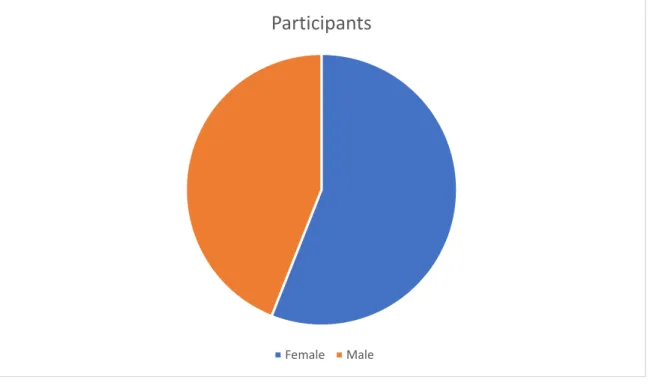
I MPACT ICT HAS ON THE PERFORMANCE OF STUDENTS IN SCHOOLS
Furthermore, t-test results also revealed that the use of digital technologies was very helpful in improving students' satisfaction level, retention and understanding of content and academic performance. The above findings therefore make it clear that the use of ICT techniques has a positive impact on the students, as the p-value for all results is less than 0.001, which means that there is a strong correlation between the use of ICT technology and understanding of the students to the content, retention level of the student, confidence of the student and their academic progress. The use of imaging technology in the classroom, such as digital cameras and digital microscopes, opens up new possibilities for students to better visualize scientific concepts.
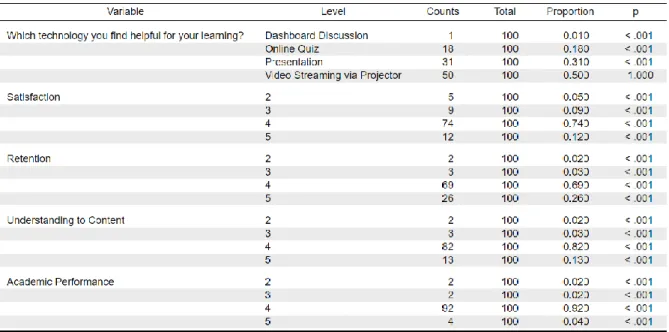
R OLE OF TEACHERS AND THE EFFECTIVE ADOPTION OF ICT
The main aim of the study was to analyze how advanced technologies in schools can be useful to improve student achievement at the secondary level. The study's findings indicated that 100% of the participants answered the questionnaire's questions, with the average response of the participants indicating '4', meaning 'satisfied'. This means that the students are satisfied with the use of digital technologies by the teachers of Ras Al-Khaimah UAE; either it is in terms of video streaming. To achieve this level of quality, teachers must use effective methods to educate the students and promote an educational atmosphere powered by technology for the benefit of the students.
